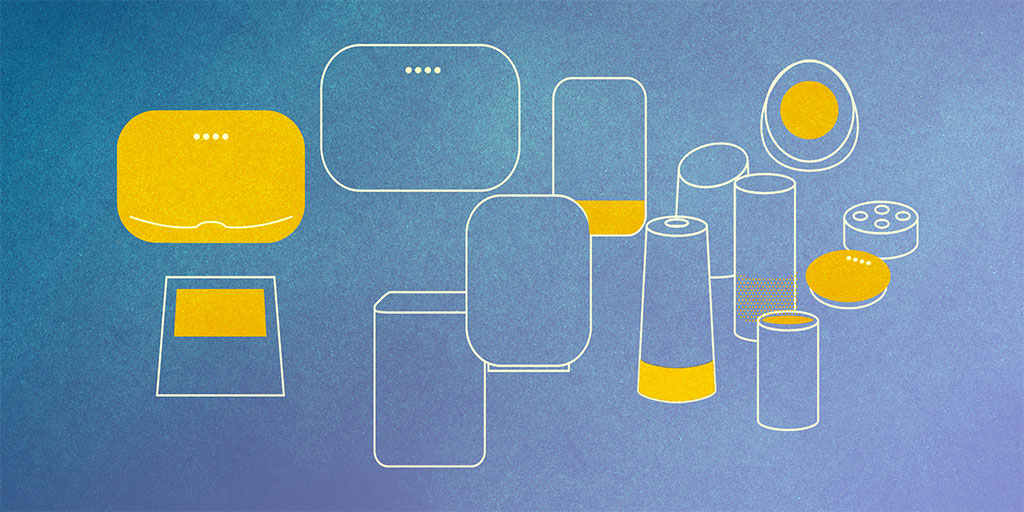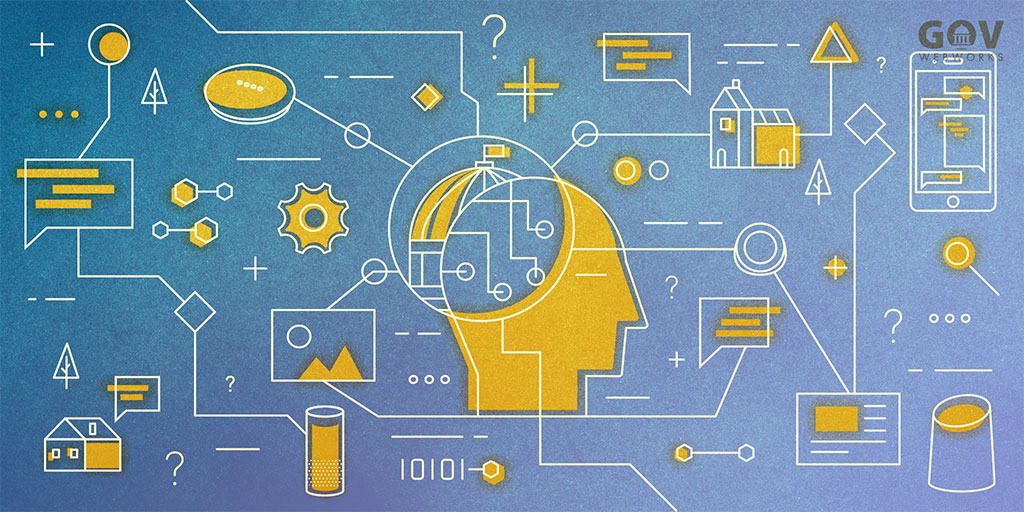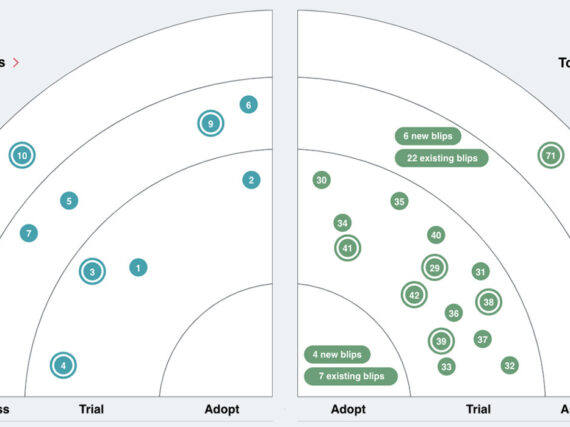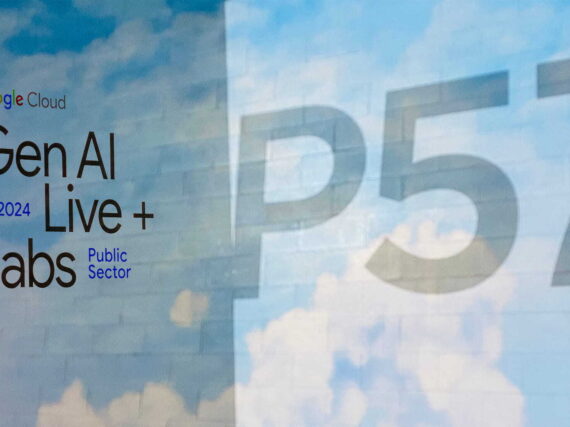Why Smart Content Connectors are the Future of Government Websites
I’ve been around long enough to see several major shifts in content consumption behavior, such as print to web, and web to mobile. The next big shift is already underway and drastically changing audience expectations for finding and consuming content. It’s also changing how content needs to be created and distributed. What I call “Smart Content Connectors” are both the cause and the solution to this ongoing disruption.
Smart Content Connectors (SCC) utilize artificial intelligence (AI) and machine learning (ML) to help identify a user’s intent, and intelligently connect them with the content they are seeking. Examples include virtual assistants, chatbots, recommendation engines, and predictive technologies. All of these use machine learning to predict what users are looking for based on multiple data points.
Why do we need Smart Content Connectors?
SCCs are needed to meet the new expectations and behaviors of users for finding and consuming content. In the early 90s, the newborn web was still looking for its killer app. This came along in the form of curated directories of links such as AltaVista, Lycos, and Yahoo. As the number of websites grew too large for manual curation, these services grew into automated web-crawlers, scouring the web, cataloging and indexing everything they found.
Today, search engines have evolved from simple directories of links to sophisticated content portals that make use of artificial intelligence and machine learning to provide relevant and predictive results. And, here’s the important part for website owners: More often than not, search engines like Google are now trying to provide enough content and context so that you never have to go anywhere else.
And that is the crux of where we are now. Google has shifted its focus from being a “search engine” to being your one-stop portal for finding and consuming relevant content, be it on their website, your mobile device, a smart speaker, or a smart display.
Google is a “Smart Content Connector” on a massive scale. And they are setting the stage for the next disruption of content finding and consumption by offering up bite sized pieces of content such as content summaries, news briefs, events, reviews, and location data. At the same time, they replace complex navigational structures with simple conversational search interfaces for finding and navigating the information.
This shift in content consumption (and consumer expectations) will affect the way government entities package and distribute content, and the tools they will need in place to do it effectively. Traditionally designed websites, devoid of smart content connectors, will become points of friction for citizens and fail to meet current expectations for content discovery and delivery.
How do SCCs provide a solution?
Smart Content Connectors help to predict user intents, and more quickly provide the most pertinent content. Tools such as conversational interfaces, recommendation engines, personalization tools, and semantic content parsers can leverage AI and machine learning to provide a more intuitive and engaging experience to audiences, helping to quickly connect them with relevant content. They also ease the friction caused by static content connectors.
Consider an SCC like a virtual assistant (chatbot). Instead of requiring a user to navigate through multiple complex hierarchies of content, and at each step, try to determine which navigation element their desired content might be under, they can just ask for it in a conversational way. It is the same experience as if they were talking to a support person. This is a “smart” way of connecting users with content.
A tremendous benefit of this approach is that it empowers diverse audiences to reach the same content using different questions and phrases. The system can “predict” what they are looking for regardless of how they ask the question.
In addition to the value to the user, the ROI relating to internal resources can be dramatic. SCCs can cut down on support/staff requests, which often occur when users can’t find the information they seek via traditional means.
Smart versus dumb
Compare SCCs to Traditional Content Connectors (or “dumb” content connectors) such as menus, links, and other navigation providers. They are essentially static and have no understanding of context or the user visiting the website.
Current websites use “dumb” content connectors to link together thousands of pages of content. They have no capability to understand, learn, or predict the “intent” of the user. Instead the entire onus is on the user to figure out how to find relevant information. Often there are many barriers and obstacles that can hinder finding information such as:
- Complex menu systems
- Content buried many levels deep
- Pages with dense content
- Poorly labeled and identified content (for example, industry terms that an end-user might not understand or recognize as synonymous for the desired content)
Why SCCs will take over
As I mentioned above, companies such as Google, Amazon, and Apple are battling for the users attention not just on the web but on a multitude of touch points throughout users’ homes. These include a huge variety of smart home devices utilizing Google Assistant, Alexa, and Siri in the form of smart speakers, smart displays, and even watches. The following statistics emphasize the increasing change in how users access content via assistants:
- 50% of all searches will be voice searches by 2020 – Comscore
- About 30% of all searches will be done without a screen by 2020 – Gartner
- 90.1 million U.S. adults use voice assistants on a mobile phone, 77.1 million use voice assistants on a smart speaker – voicebot.ai
- Alexa is now integrated with over 20,000 devices, a 500% increase in just 8 months – cnet.com
- As of November 2018, Google Assistant was integrated with over 10,000 devices – voicebot.ai

A recent study by Rewire showed that streaming services such as Spotify have actually changed the way music/songs are written. Before music streaming services became popular, many songs had long instrumental introductions – think of Stairway to Heaven! But in an age of short attention spans and overwhelming choice, content consumption behavior of music has changed. Now, if a song takes too long to get to the actual singing, users just click next.
How is this relevant to everything we are talking about? Because the expectations of consumers on how they browse, search, find, and ultimately consume content is changing drastically due to the services and devices from Google, Amazon, Apple, and others.
So what needs to happen to meet audience expectations? Here’s how to start planning for a Smart Content Connector future.
Get started now
There are a number of ways to prepare. One approach is with a component-based system that allows you to create discrete pieces of content that can be reused, mixed, matched, displayed, and distributed based on criteria such as context, intent, and distribution channel. This in itself is not an SCC, but it helps create the architecture for delivering content to SCCs.
Consider a typical page of content. The title and summary should be reusable across a wide variety of purposes:
- Pullable as a click-through teaser on other pages
- As related content in blocks
- As summary content for smart displays
- In conversational interfaces such as chatbots
Users are increasingly turning to assistant-based devices, including smartphones smart speakers and displays, to search for content. Therefore, the way content is created and the tools used to create it need to be adjusted. It should be pulled apart, reassembled, and formatted to target these more bite-sized formats.
We leverage content management systems such as Drupal to provide this “componentization” of content. If you are planning to redevelop your website, this approach provides an opportunity to dramatically future proof your investment and provide a much higher ROI.
AI/Chatbot Innovation Lab
We’ve recently launched a AI/Chatbot Innovation Lab at GovWebworks. Our aim is to investigate how to best apply AI and machine learning technology in government websites. We will then tie it all together into a cohesive strategy for customer interaction to increase citizen engagement.
In our next post we’ll continue the discussion about Smart Content Connectors and share some of the prototypes we’ve been building to showcase the technologies and their capabilities. In the meantime, if you want to talk about how these tools can be leveraged for your online initiatives, give us a call.
Learn more
- Contact us to learn more about how we can help
- Key Steps to a Chatbot Pilot Program by Adam Kempler
- Rise of the Government Chatbot via GovTech
- 7 Ways Chatbots Can Increase Business Efficiency and Productivity via Chatbots Magazine
Author bio
Adam Kempler is currently developing chatbot pilots for the State of Missouri and GovWebworks CivBot. He’s been building web and mobile solutions for Fortune 100/500 companies and government agencies for the past two decades. When he’s not talking with chatbots at work, he’s creating a mobile, conversational robot at home.







